Until recently photovoltaic with storage it wasn’t even considered. The costs for the systems were quite high, the battery life was too short and the return on the initial investment was not guaranteed. Today, however, the general picture is changing and the credit – or the fault, if you prefer – is the higher bills and the 2022 restructuring bonus.
So today there are many Italians who are thinking of adopting these systems but, exactly, how do they work? What changes compared to a classic photovoltaic system? How much is it? And what are the advantages of photovoltaics with storage?
Photovoltaic with storage: what it is and how it works
The photovoltaic systems have been around for years now. We are used to seeing them on the roofs of houses, companies and even in the midst of immense meadows, connected to power plants which then manage the energy produced. Because that’s what they do: they use photovoltaic cells, which make up the individual panels, to produce electricity.
The idea, as we said above, is certainly not recent. Thinking about it was the scientist Edmond Becquerel in 1839.
Over time we have refined the technique to be able to make photovoltaic systems a little more affordable. This is because, at a certain point, it became essential to rely on renewable energies to try to preserve the planet, obviously without giving up slightly more selfish interests, such as savings or even the possibility of earning.
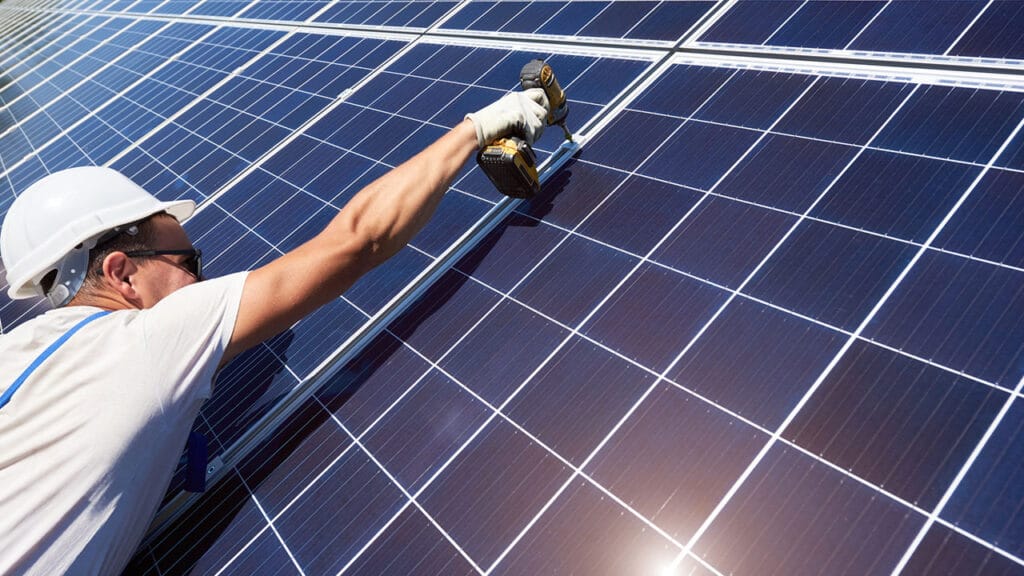
Today, photovoltaics are growing, although they have an obvious limit: a classic system allows you to consume the energy that is produced in real time. This means that everything that is produced in excess is not normally stored somewhere but returned to the electricity grid.
Normally the owner of a plant consumes 30% of what he produces while 70% is made available to other people.
So I produce energy and others use it for free? Not exactly.
Every 6 months Gse (Energy Service Manager) pays you approximately € 0.10 for each kWh that you have donated to the network.
However, this does not mean earning money. You must in fact consider that, when your system does not work – for example at night -, you have to withdraw energy from the grid, paying it more than € 0.20 / kWh.
The photovoltaic with storage it helps you to overcome, at least in part, the limit of solar systems. These systems in fact integrate a battery that allows you to storing the electrical energy produced in excess, so you can use it later.
All this helps you to make better use of your system, managing to consume about 50% of the energy actually produced.
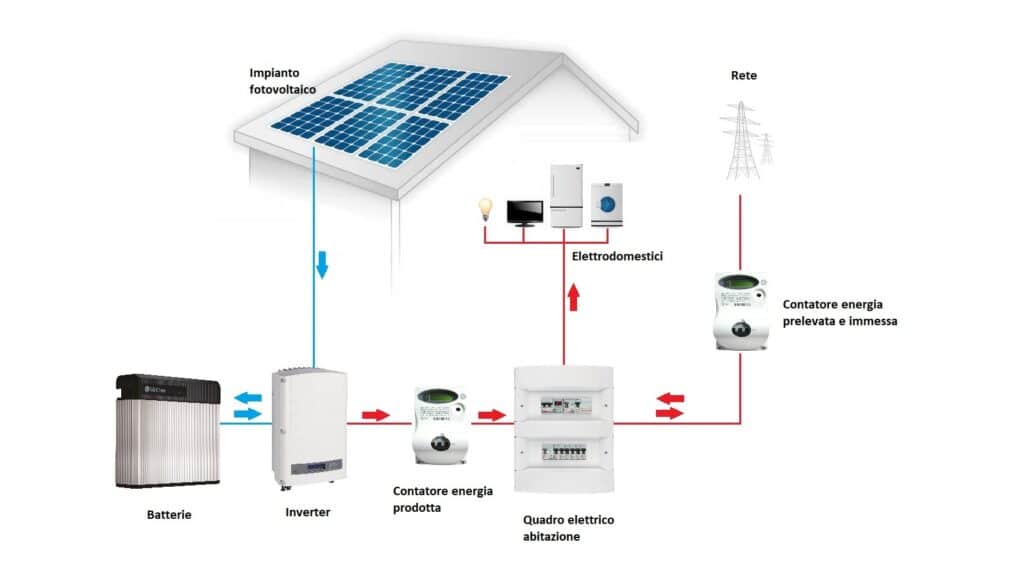
Let’s take a practical example.
Suppose you need to use the washing machine.
If you do it during the day, when the classic system is operational, you automatically exploit the solar energy converted by the panels.
In the evening, however, without a battery to accompany the photovoltaic system, the situation changes: you will have to use and pay for the electricity supplied by your supplier.
The photovoltaic with accumulation allows you to start the washing machine in the evening without relying on the supplier, going to use the energy stored during the day.
Photovoltaic with storage: how much does it cost?
Once you understand how they work, it is good to understand what they are the prices of photovoltaic with storage. On average a photovoltaic system costs between € 2,000 and € 2,500 per kW, to which you must add the costs of the storage system. Considering a traditional lithium battery, we are around € 1,000 / 1,500 / kWh.
Translated it means that un 3 kW photovoltaic system with 5 kWh of storage starts at around € 11,000.
If you’re thinking “it definitely pays for itself”, well… yes and no.
Calculate that the storage batteries now on the market are guaranteed for 10 years and it is not certain that in this period of time you will actually be able to pay back the investment. According to a survey carried out by AltroConsumo in 2020, considering a total cost of € 14,000 (€ 6,000 for the system and € 8,000 for a 6 kWh battery), the time needed to balance costs-savings is 15 years, 5 years longer than the actual battery life.
So I let it go? Well no.
Actually this is a great time to evaluate storage photovoltaics. In fact, the Restructuring Bonus has been extended until 2024.
The 2022 Restructuring Bonus
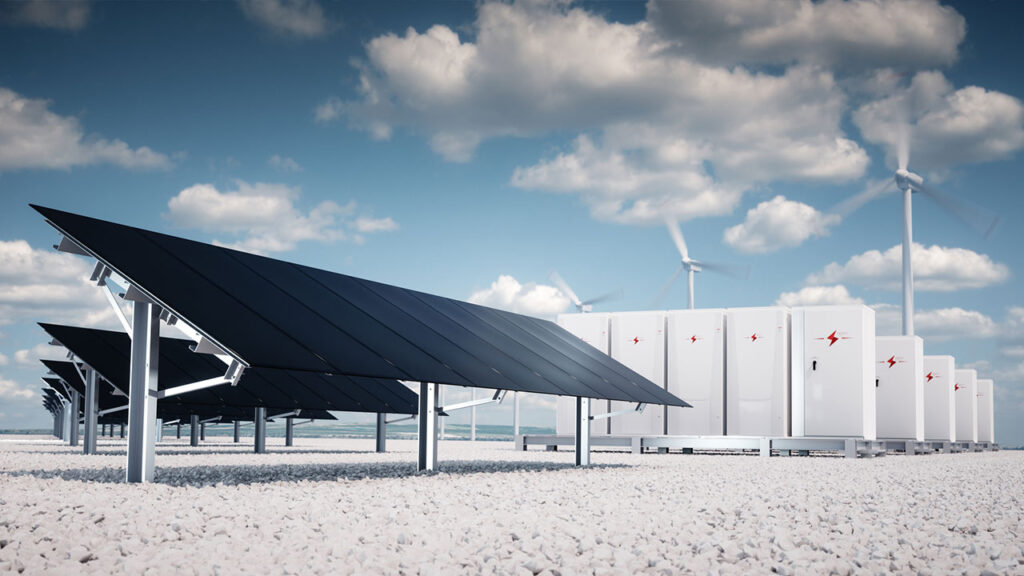
The 2022 Budget Law has esteo the Restructuring Bonus until 31 December 2024. Therefore, starting from 1 January 2022, Italian citizens can deduct 50% of the amount spent on the renovation of a residential property up to a maximum of € 96,000.
To request the bonus can be:
- the owner of the property:
- the naked owner;
- who holds a right of use on the property;
- the tenant;
- the borrower;
- members of cooperatives or simple partnerships;
- individual entrepreneurs, limited to residential properties.
The 2022 Restructuring Bonus covers 3 macro-categories: extraordinary maintenance, restoration and conservative rehabilitation and building renovation. This it also includes the installation of plants for the use of renewable energies.
The taxpayer who wants to take advantage of the Bonus can choose one of these methods:
We point out two important things. The first is that to get the Restructuring Bonus you will have to make the payment through a talking bank transfer, bank or post office. The second is that the 2022 Budget Law includes the Anti-fraud decree which makes the compliance visa (then a statement from the professional who installs the system confirming that you are entitled to the bonus) and the certificate of fairness of the expenses, drawn up by a qualified technician who will have to check whether all the limits set by the legislation have been respected for each intervention carried out.
Is it really worth it?
Someone might tell you that, with this system, you can clear your bill.
It’s false.
First of all because the bill is not composed only of the raw material. There are also transport costs, meter management and system charges.
Secondly, you are unlikely to cover 100% of your needs.
However, photovoltaics with storage could help you cover 75-80% of consumption, which would still give a nice cut to the electricity bill. If you then replace the old gas boilers with heat pumps, you could also cut your gas bill, thus saving on both fronts.
Which “battery” do I choose?
If you have decided to focus on photovoltaics with storage, the fundamental step is contact a professional. It will be up to him to advise you on the best solution taking into account all the necessary factors such as system size, capacity, power, modularity, duration and much more.
But that doesn’t mean you don’t have to arrive prepared.
First of all you need to know that there are various types of battery. Specifically, we have lead-acid, lithium, gel, stationary and AGM ones. The current state lithium and gel ones are the most common since they have a longer average life than the others, they do not require maintenance and are lighter.
The basic parameters to consider are 3:
- capacity: how much electricity can the battery store;
- power: the rate at which the battery stores energy;
- time: that is the life span of the battery, which is normally measured in number of charge and discharge cycles. As we said, the average is about 10 years, but a battery can last up to 15 years.
The installer will advise you on the right accumulator, taking these elements into account, but in the meantime we will suggest 3.
LG Chem RESU
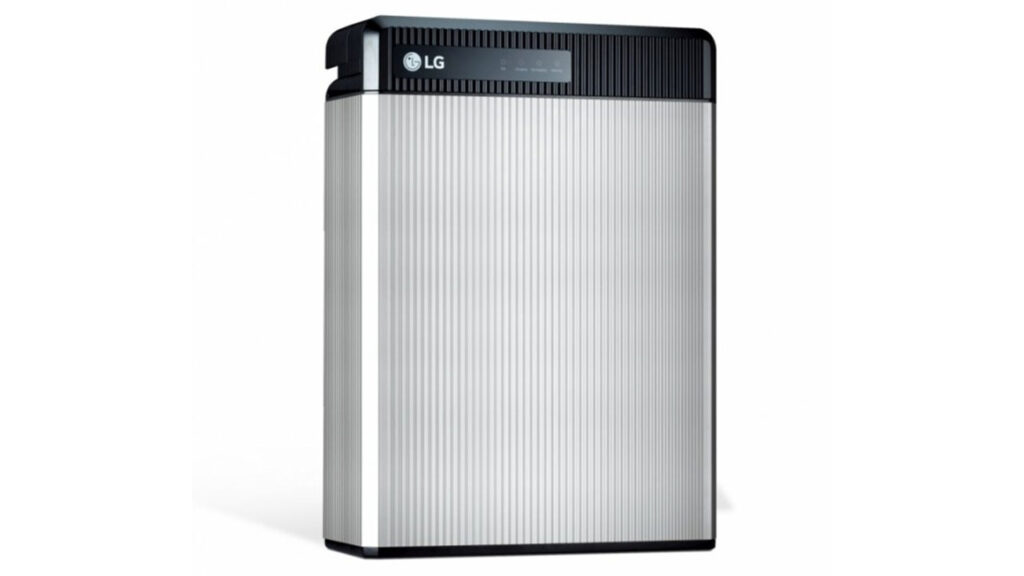 LG Chem RESU
LG Chem RESU
RESU is LG Chem’s residential solution that ensures 80% capacity after 10 years of use.
It is single-phase, has a capacity that can be 3.3, 6.5 or 9.8 kW and the power ranges from 3 to 5 kWh.
Two types of installation are foreseen: on the wall or on the floor, both indoors and outdoors.
But watch out for temperatures: it should be in environments between 15 ° and 30 ° C and withstands variations from 0 ° to 40 ° C. This means that if you live in places with low temperatures and very harsh winters, you absolutely cannot install this accumulator outside.
Tesla Powerwall
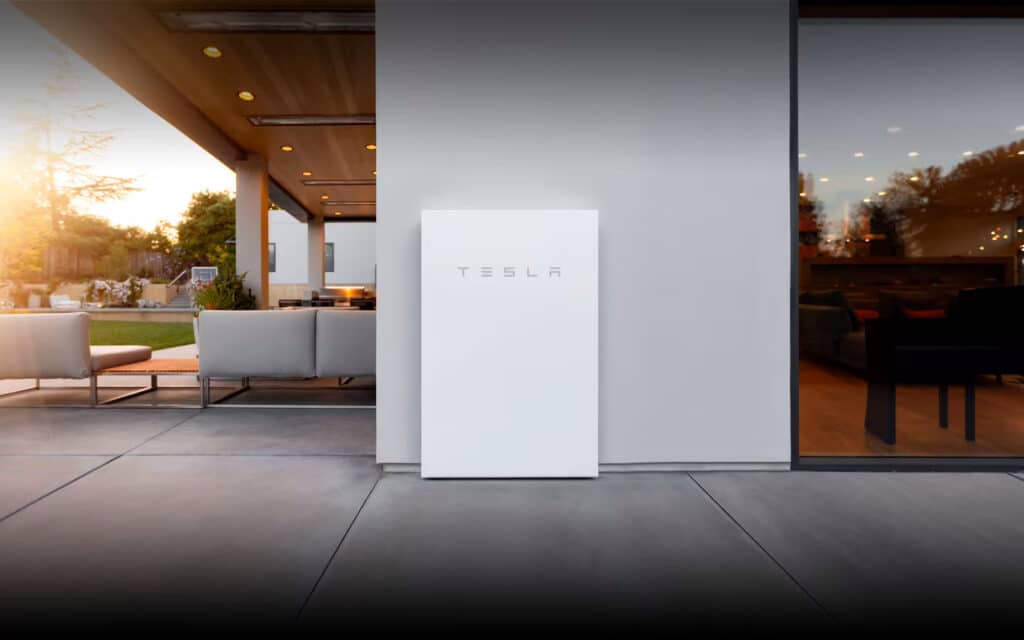 Tesla Powerwall
Tesla Powerwall
Not just cars for Tesla. A few years ago Elon Musk’s company also started producing accumulators for photovoltaics, giving life to a particularly interesting product. Powerwall is not only aesthetically pleasing but works in temperatures from -20 ° to 50 °. The capacity is 13.5 kWh with the possibility of combining up to 10 Powerwalls for a total of 135 KWh, while the power is 7 kW peak and 5 kW effective continuous.
Varta Pulse
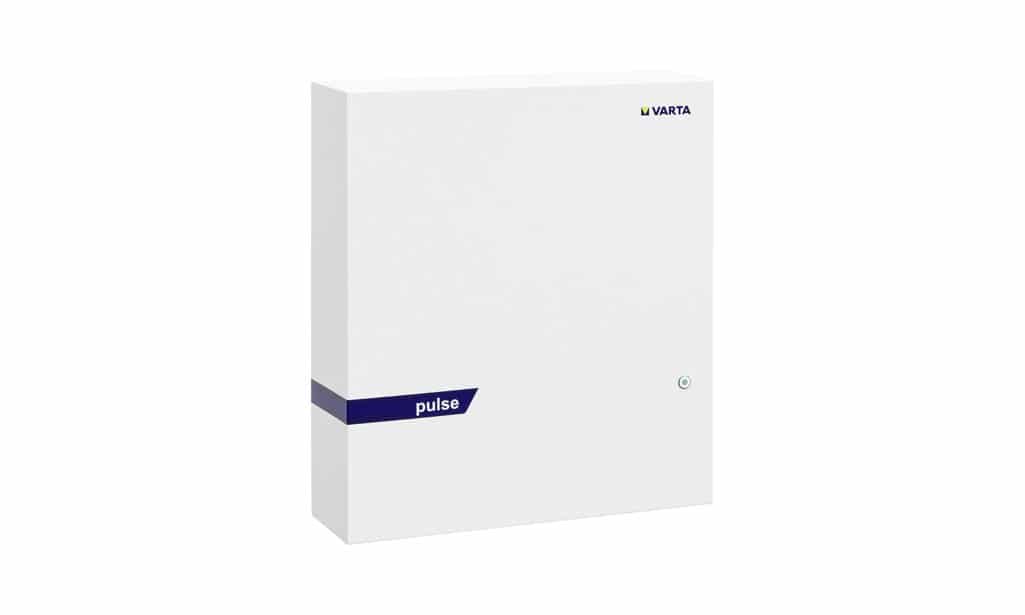
We conclude with Varta and its 3.3 or 6.5 kWh Pulse, with the possibility of combining a maximum of 5 units.
Here the power goes from 1.6 to 2.5 kW, the installation is only on the wall and the tolerated temperature ranges from 5 ° to 30 ° C.
On paper, therefore, it is less interesting than the competition but compensates with a lower price.






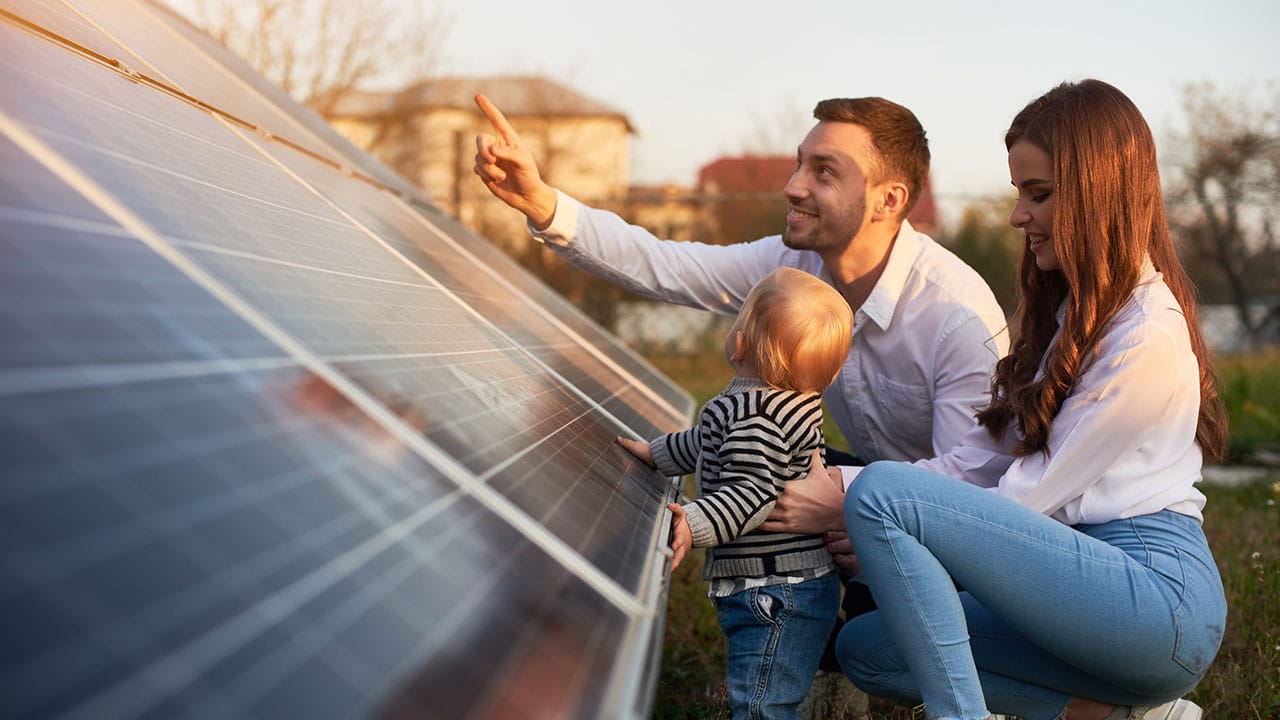








Leave a Reply
View Comments